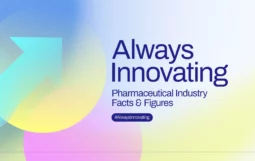What it takes to enable tech transfer partnerships
Technology transfer partnerships have been the cornerstone in the fight against the COVID-19 pandemic, enabling rapid scaling of health innovations but also raising new challenges. Now, we need long-term, sustainable national policies to ensure tech transfer continues to improve access to medical innovations.
Complexity is the name of the game when it comes to vaccine and drug development. From process to final product, manufacturers are faced with a series of technical challenges.
When a new health technology, like COVID-19 vaccines, needs to be scaled up, voluntary technology transfers play a pivotal role. This is a process that shares a bundle of rights with a trusted partner to produce a vaccine or medicine. For the pharma industry, such a package can include the sharing of know-how, show-how, training of skilled human resources, organizational and procedural knowledge to operate technologies, and more.
From the outset of the pandemic, companies demonstrated how beneficial tech transfer can be. Groundbreaking collaborations resulted in around 358 voluntary partnerships for vaccine production – of which over 89 percent included technology transfer – helping to make possible the unprecedented production of over 11 billion doses of COVID-19 vaccines by the end of 2021. Pharmaceutical companies were able to find trusted partners that met several rigorous criteria for tech transfer and had the ability to scale up. This is a testament to both their technical capacity, but also to the value partner countries placed on technology transfer as a key economic and development growth opportunity. It’s the reason why the partnerships are not in the thousands and with every potential manufacturer in the world.
To ensure effective technology transfer, the right infrastructure needs to be in place. In the recent past, there have been instances where deals have taken longer to materialize or have even failed – not because of the technical capability of licensees but because of the environment, policies, and lack of skilled labor in the region where licensees operate or are based. Infrastructural capabilities, such as access to consistent electricity, cold chain capacity, and water supply, need to be taken into consideration. Other elements, such as sufficient skilled human resources, high-volume demands, and the need for strong regulatory track records and timely processes, must also be factored in when striking such deals. All of these aspects help cement a tech transfer partnership and can set the speed at which the process will be completed.
But the transfer process is not as simple as sharing a vaccine “recipe” on a pen drive or in a tweet, as many critics of the pandemic response have suggested. It’s a strategy that countries, governments, and companies need to foster and pursue long term. However, there are certain indicators that ignite voluntary collaboration and a sustainable innovation ecosystem that promotes local talent and economic growth, as well as attract investors and skilled workers from other jurisdictions.
At IFPMA, we’ve recently released an updated perspective on the indicators needed to make technology transfer happen. It posits that emerging economies can enable a more dynamic and voluntary flow of pharmaceutical technology between innovators and local licensees if 10 main factors are in place:
- Stable rule of law
- Political will and transparent economic governance with policies in place that allow for partnerships
- A trusted partner adhering to high ethical and manufacturing standards
- Viable and accessible local market
- Appropriate capital markets
- Innovation-friendly environment with a robust intellectual property incentive system
- Access to information, from better documentation of available resources to the longer-term issue of addressing the complexity of the global knowledge market.
- Adherence to high regulatory standards – for example, governments require product registration and data submissions to demonstrate quality, safety, and efficacy
- A skilled workforce
- Clear and sustained economic development priorities.
This is not a wish list, but a framework that helps create the conditions that will allow us to tackle health challenges. Partnerships between academia and industry will spur the discovery of innovative solutions. We encourage policy planning to focus on strengthening capacity and advocate for appropriate strategies to facilitate technology transfer.
The biopharmaceutical industry is in the business of saving lives and has shown a willingness to work with different stakeholders to reach everyone, everywhere. We share a common agenda to get vaccines into arms today and to prepare for technology transfer that will foster enabling environments for health equity and future pandemic preparedness. Though technology transfer does not present the full map of what’s required for increased access to life-saving treatments for those in need, it must not be underestimated for the tool that it is – on its own and in thinking through other responses and health policy measures.
This blog was originally published in The Medicine Maker.
Author




